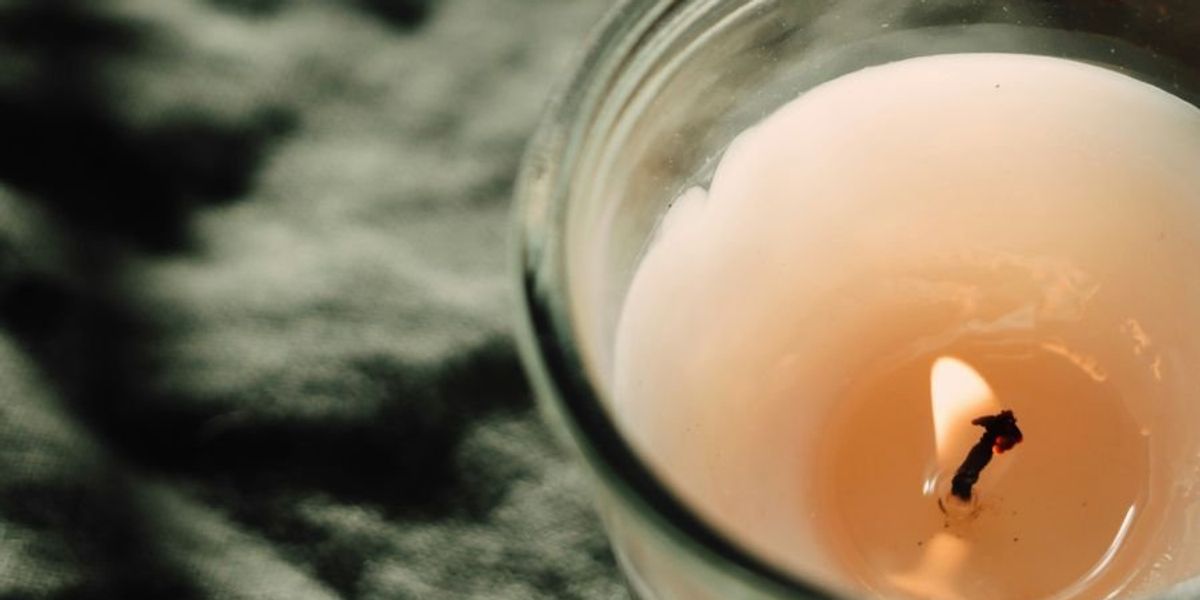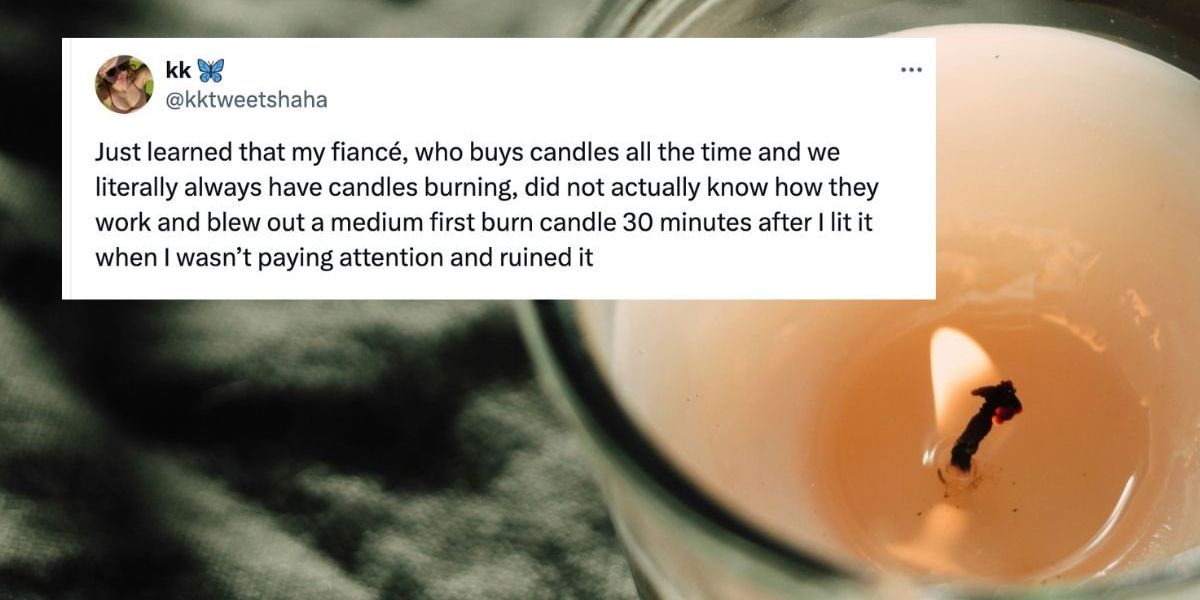
The evolution of candles from lighting necessity to scented ambience creator is kind of funny. For thousands of years, people relied on candles and oil lamps for light, but with the invention of the light bulb in 1879, fire was no longer needed for light. At that time, people were probably relieved to not have to set something on fire every time they wanted to see in the dark, and now here we are spending tons of money to do it just for funsies.
We love lighting candles for coziness and romance, relishing their warm, soft light as we shrink from the fluorescent bulb craze of the early 2000s. Many people use candles for adding scent to a room, and there are entire candle companies just for this purpose (Yankee Candles, anyone?). As of 2022, candles were an $11 billion business.
With their widespread use, you’d think we’d know a thing or two about candles, but as a thread on X makes clear, a whole bunch of us have been burning candles wrong our entire lives without knowing it.
A post from @kktweetshaha started the education session: “Just learned that my fiancé, who buys candles all the time and we literally always have candles burning, did not actually know how they work and blew out a medium first burn candle 30 minutes after I lit it when I wasn’t paying attention and ruined it.”
Many people had no idea what she was talking about, so she explained.
“If a candle is not burned for long enough on first burn to melt edge to edge it will create a ‘memory ring.’ Once a candle has a memory ring, it will continue to tunnel and never burn all the way across.”
This is why you should not light a large candle at night, which is unlikely to burn all the way across before you need to blow out to go to bed. Allow at least one hour per inch of candle width
“This is why you should not light a large candle at night, which is unlikely to burn all the way across before you need to blow out to go to bed. Allow at least one hour per inch of candle width,” she went on.
So that’s why candles always end up with a hole in the middle, making us think the candle companies are just running a scam to make us go through candles faster. Nope. It’s user error, and many people were flabbergasted by this realization.
“This is the most useful information I’ve been given my entire adult life,” wrote one person.
“This skill should be taught in schools,” shared another. “The amount I’ve wasted on half burnt candles is outrageous, the amount of times I’ve used Algebra since leaving school = 0.”
“When I worked at Pier 1 in the 90s I got to go to some candle workshop that taught us the correct way to use (and therefore sell) candles and that is probably some of the most useful knowledge I’ve carried in my head this long life,” shared another.
Some people suggested wrapping aluminum foil around the rim of the candle to help recover a candle that’s been tunneled or to speed the process of melting the wax across the entire candle. Other suggested melting the candle down in the oven to even it back out again. The original poster pointed out that sometimes candles aren’t wicked properly. According to Lone Star Candle Supply, if a candle is more than 4 inches in diameter it may become necessary to have two wicks.
@CompostTraining There are a few things you can try to improve it even if not fixing entirely. The popular fix is wrapping the candle in tin foil to increase the temperature across the surface.
The candle posts also prompted a separate discussion about candles and indoor air quality and the volatile organic compounds that are released when they are burned. Some people equated burning candles with having a small engine running in your living room, though according to the Cleveland Clinic, there’s scant evidence that the amount of toxins released by burning candles is actually hazardous to your health, especially if you use high quality candles in a well-ventilated area.
How do you know if a candle is “high quality”? First, check the wick for metal. Lead in wicks is not nearly as common as it used to be, but best not to risk it if you find metal in the wick. Second, choose soy, beeswax, palm or coconut wax candles instead of paraffin, which is petroleum-based product and more likely to put off soot and smoke particles. Everyone reacts differently to different amounts of particulates in the air, so if you find yourself getting headaches or respiratory symptoms when using candles, it’s probably best to avoid them. But if you tolerate them, feel free to enjoy as recommended,—just make sure that first burn melts the wax all the way to the edges to avoid the dreaded tunneling.
Source: https://www.upworthy.com/people-baffled-to-find-out-they-ve-been-burning-candles-wrong-their-whole-lives
